The next time you’re flying in the Winter and go through an airport noted for snow and ice, look out the window to see if they’re using a runway friction detector. Say what? Yes, a runway friction detector. They’re used by airports in cold climates to determine how much room an airplane needs to land or takeoff on a wet runway. The result is a function of speed and weight times weather conditions. But more on that in a bit. Saab automobiles, particularly the 900 series, were well-suited to this task and often modified for this purpose. The seller’s 1989 Saab 900 is one such vehicle and is being sold as part of an airport’s fleet rotation. The vehicle is located in Kent, Washington and the no reserve auction here on eBay is up to $5,200.
Saab’s 900 is a mid-sized car which was produced between 1978 until 1998 in two generations, the first from ’78-94 and the second from ‘95-98. The first gen, which includes this car, was based on Saab’s 99 chassis with a longer front end to meet U.S. crash standards. They could be had with carbureted, fuel injected or turbocharged engines, which applies to the seller’s car due to its need for speed. Saab as a European manufacturer is familiar with extreme weather conditions.
So how does this runway friction detector stuff work? Well, a fifth wheel is mounted in the trunk of the car, connected to the rear wheels via a chain-drive. Then the wheel is deployed with about 300 lbs. of downward force once the car is at speed. A built-in 10 to 15% slip of the fifth wheel allows for constantly varying calculations of surface friction. Sensors in the car transmit readings to the airport towers in almost real-time, so they can communicate with aircraft regarding runway choice, speed when touching or leaving the snowy or icy runway surface and about much runway and braking will be needed given the weight of the plane. We’re not certain how the detector system meets up with the car, but we believe it is most commonly installed by airport personnel.
The seller, who is actually a dealer, is offering this Saab in very good overall condition with low miles (13,000). However, these are likely to be hard miles after chasing up and down airport runways at up to 125 mph. This car, and others like it, replaced something called a “skiddometer” — a heavy trailer pulled behind a truck or some other airport vehicle. This was determined early-on to not be an effective way to get the job done. But probably a hoot to watch!
This 1989 Saab appears to still have all its friction detection equipment installed, which would make it quite the conversation piece. However, it does look as though the fifth wheel has been removed and we don’t know if any of this would work again if you tried. Plus, riding around with all that stuff and limited passenger space doesn’t seem to make it very practical for anything other than to show it off. We’re told it runs fine and the only thing that’s not working right is the air conditioning (kind of ironic given this car’s original purpose!).
Saab 900’s of this vintage seem to be priced as used cars, with none of them going above four figures. And I can’t imagine the fiction detecting status of the car adds anything to its value. Perhaps you could take all that stuff off and make a daily driver out of it, but why go to the trouble? Buy it for what it is or not at all.
If you just have to know more about these unusual vehicles, you can check these links out:
SaabPlanet, Road&Track, Jalopnik
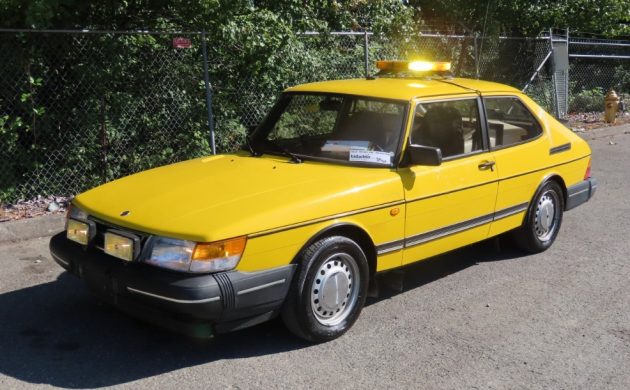

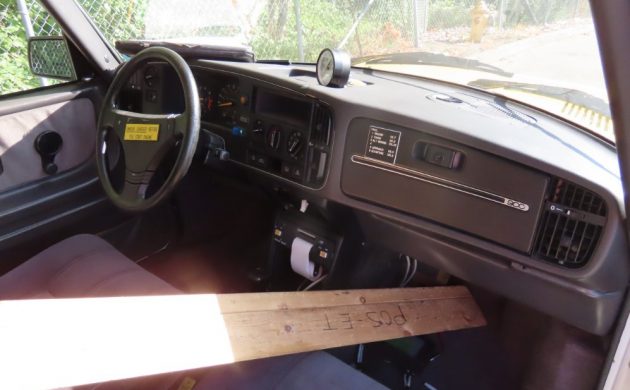

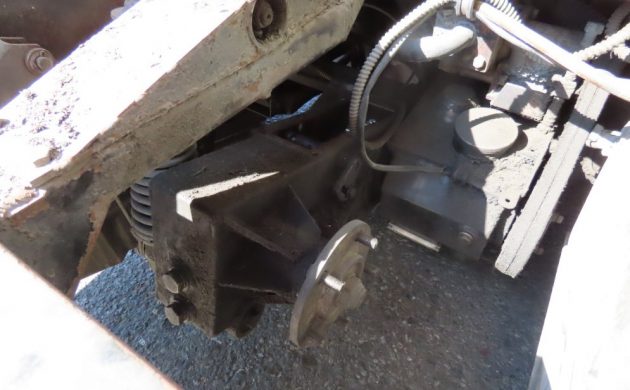
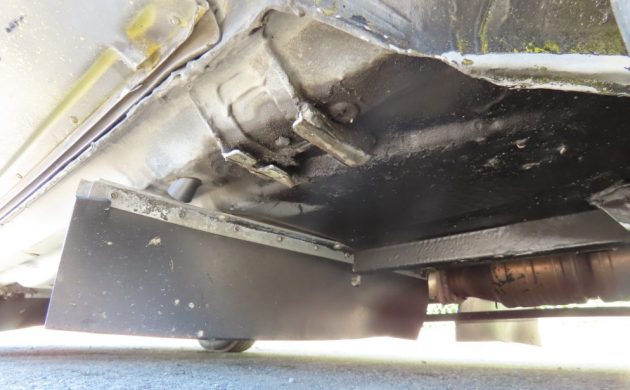
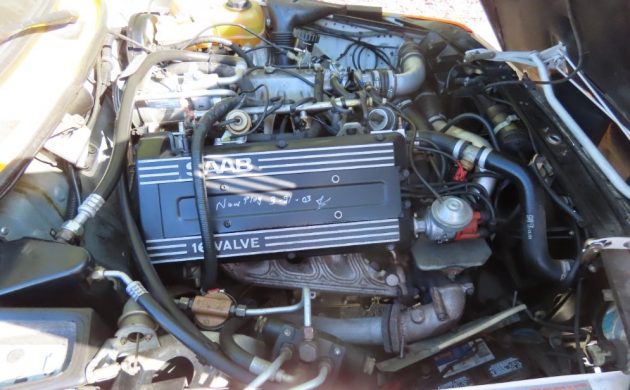




OMG, when i was in the northeast years back we had the contract for the Port’s Of Authority for both Ny and NJ. We rebuilt all thier transmissions, driveshafts and differentials. then one day we got a call, hey, can you rebuild a SAAB transmission? Yeah sure we’ve done those before. Then THAT THING SHOWED UP. needless to say we rebuilt the trans but didnt have the means to properly road test it. Sooooo, we delivered it to Newark Liberty Airport’s vehicle service division, well the manager asked us if we road tested it, I said yes, he asked how fast, i said abour 60 MPH. He said Oh hell No. Come with me. To make a long story short, he called in for a diversion of all aircraft to test this thing on thier primary East to West runway. 145 MPH with me in the passenger seat and he drops the friction wheel. 20 years later i still wake up in cold sweats from that day.
Frank and other BF readers,
As a Tatra automobile collector, and someone living in the Washington DC area, in the early 1980s I had been advised by a close friend at the federal DOT, of plans to demonstrate & provide a new Tatra T-613 airport runway friction tester for testing & approval for USA sales.
I managed to observe the Tatra T-613friction tester in use at Dulles Airport in northern Virginia, and I was very impressed with what I saw. At that time I was told it was Tatra who developed the “all in one” powered vehicle with inboard testing tire & measuring equipment. The majority of the tests were carried out at the NASA Wallops Island facility on the Eastern Shore of MD.
The Tatra T-613, with a powerful twin overhead cam air cooled V8 located over the rear axle, allowed for the testing wheel to be located where the back seat would have been, and the huge luggage area up front allowed for a large water tank, used to test the runway friction factor when wet.
And yes Frank, I’ve watched as the Tatra runway tester, on a bright sunny day, came roaring down an airport runway at speeds exceeding 125 mph, then suddenly the car began gushing water from under the middle of the car, and a few seconds later the test tire dropped down to touch the pavement, just as a plane’s tire would do on landing.
I’m not sure if any Tatra Runway Testing cars were ever sold in north America, but my friend [who basically ran the DOT legal department] said one of the challenges was that the Tatra, having been designed in the Soviet Bloc, was not approved for importation to the US or Canada, for use on public roads.
I do know that in the 1970s and 1980s the Tatra T-613 was the vehicle of choice for runway friction testing in Europe as well as Asia. I also know that the “USA produced” a friction tester vehicle, it was a modified Chrysler minivan. However it was not able to safely attain the high speeds the Tatra could muster.
I would ask that any Barn Finds members who have ever heard of a Tatra Runway Friction Tester in use in the USA or Canada, please let me know.
Google Tatra T-613 Airport Runway Friction Tester to see photos of the cars.
Additionally, Yellow is the standard color for POA primary vehicles nationwide, white for standard service vehicles. Lighting and sirens are standardized nationwide. So the image of the car in the pic’s is exactly the same as what I was driven in to my current and unreasonable fear of SAAB’s.
Now that’s one use for a vehicle I hadn’t heard of before.
You live long enough and keep reading BF you learn some arcane facts. :)
I would never had even have considered the possibility of such a vehicle or its use at airport. Well for that matter I still dont get how airplanes stay up in the sky…oh I know, downward force equals lift or whatever; but every time I go up in an airplane I’m just amazed. Even more amazed when it lands and I dont even know whose driving!
“who’s” driving….I may not understand lift but I know the difference between ‘whose’ and ‘who is’……though my fingers dont!
On the contrary Russ, the best classic 900 cars, particularly the turbos and SPG turbos are achieving 5-figure sales amount as these cars begin to become more appreciated and the amount of available cars declines.
What is the purpose of the piece of wood in the passenger seat?
It’s to bite down upon when the 5th wheel engages.
When these first came out, I was stationed in Alaska with the USAF where the runways were more often less than dry so knowing how slick or icy it was was important to knowing if you could stop your fast airplane, or keep it going straight while doing so, even on a long runway. Before these pilots just relayed to the tower how the “braking action” felt after they landed (Good, Fair, Nil, or some combination). That had credibility and was passed on to the next guy landing. This thing was a fortune to produce and never had the same credibility. But, it was an attempt at a better solution and if it kept one airplane from going off the end it probably paid for itself. Glad to see its going away.
I had bought a Saab 900 Turbo convertible for what is now fo ex-wife. The car was solid, tight and fun to drive.
Would love an SPG convertible.
There is no such thing as an SPG convertible. The closest thing was the limited edition ‘Springtime in Sweden’, and that was only a cosmetic package.
I have often seen cars speeding down the tarmac in the winter time at airports (several times at Denver, the home of the five mile take off!!) and until now did not realize what they were doing. Great story.
I was watching this car. I ended up with the ex Boston Logan car. Price tag in late ‘86 was $86,981!